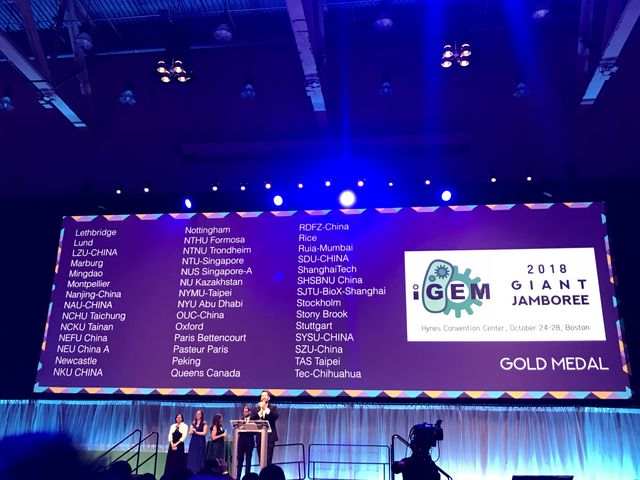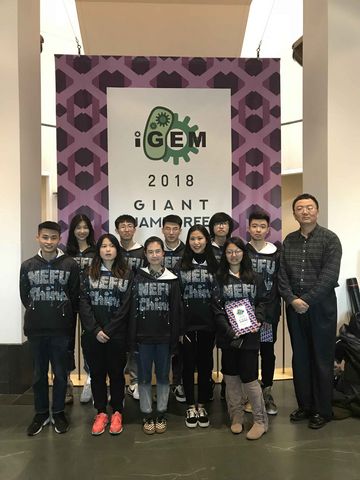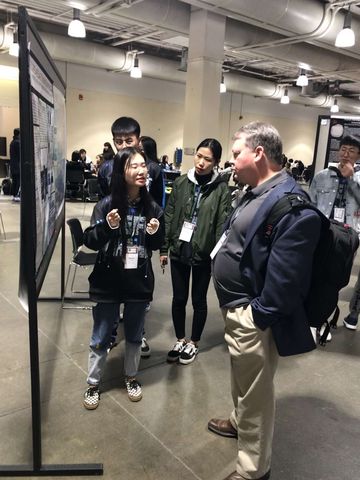How do you protect the content of a letter that you don't want to be known by outsiders? With just a steamed bun, a can of yogurt and a powder, the NEFU iGEM team created a letter with the yeast gene sequence, so that the letter comes with a timed self-destruct function and the outsider has nowhere to start. With this brain-opening creativity, rigorous teamwork experiment results, and promising practical application value, the NEFU team won the gold medal in the 2018 iGEM competition and won the only single award for best information processing.
The iGEM Competition (International Genetically Engineered Machine Competition) is the highest-level international academic competition in the field of synthetic biology sponsored by the Massachusetts Institute of Technology (MIT). On October 28th, the 2018 iGEM Competition came to an end in Boston, USA. During the contest, all of the teams from 343 top universities around the world including Harvard University, Massachusetts Institute of Technology, Oxford University, Peking University, Tsinghua University competed fiercely and the NEFU team won a gold medal and the only single award. This is the second time that our university has won a gold medal in the event and the first time a single award.
Team captain Pan Jiasong said that this competition is to use artificial biological modules as building blocks to build the castle that the designer wants. Moreover, the aim of the competition is to promote the application of life science study and innovation in both production and life.
The project of the NEFU team, Yeast Information Security Transmission, which is dubbed “yeast chicken feathered letter” by the students, began with the chat between classmates. Yan Shengyu, a 2016 student from the College of Life Sciences had a thought that combined synthetic biology with encryption and decoding technology to use yeast to create a message for encrypted mail. Song Weiye, a member of the team, added: “If you compare the traditional encrypted information to ordinary letters, then the yeast that carries the information is like a safe. Without the given decoding scheme, this safe is unbreakable.”
The project “Yeast Information Security Transmission” is based on synthetic biology, and its ultimate goal is to ensure information security. The team converted the English alphabet and the yeast gene sequence and set up multiple layers of obfuscated information. In this case, only if we do the correct biological decoding can we get the information they wrote in advance - “we are from Northeast Forestry University in Harbin, China”.
In order to ensure biosafety and set controllable information validity period, the team mathematically controlled the apoptosis of the yeast to make it survive for various periods between ten hours and several days. In other words, the information could be “timely destroyed”.
The entire project needed to be done across disciplines, which meant that outside the biology lab, members from the College of Science and the College of Computer Science and Technology were responsible for information encryption and decoding, conversion from natural language to password language, and web design. They won the single award of information processing for their excellent information processing capacities.
It was not easy to achieve creativity and earn honor. As early as last December, the school-wide recruiting activities began. After targeted learning and elimination assessment, the winners were free to form a project team, and had weekly seminars to discuss the progress. Finally, the experts of the Life Sciences College voted to determine the final entry.
Prof. Zeng Fansuo, an instructor of the College of Life Sciences, said that there was a lot of sweat behind the golden ideas. “Only through the accumulation of professional knowledge and a mass of experimental operations can we produce achievable ideas.”
The whole idea and experiment were independently completed by the students, and there were countless problems encountered in the process. “When I first met difficulties, I almost collapsed. Later, I accepted the fact that difficulties were very common and I had got used to it. Now, If there is a problem, I will go ahead and solve it.” said Zhang Yibin, an experimental team member, “Once I found that theoretical data and actual test data could not be matched. After repeated examination, I realized that the theoretical data was designed for animal cells which had no cell walls, while the yeast had cell walls. After breaking the cell walls, the data was finally correct.
The on-site response session was conducted in English. The members of the judging panel were from all over the world. Their accents were different, which made the team's on-site expression not fluent enough and left many regrets. However, the team gained a lot of attention during the event. The iGEM Competition Organizing Committee gave them a high evaluation: the project has been designed to effectively protect information and has a high practical application value.
“As a teacher, I always see shortcomings. I hope my students will go further and achieve better results.” Sui Guangchao, the deputy dean of the College of Life Sciences and team leader, said that some theories were still needed to be further verified and experiment to be improved. The students should also make a further breakthrough in scientific research. The good news is that it may not be long before these yeasts go out of the lab as an information carrier and move towards real life.


